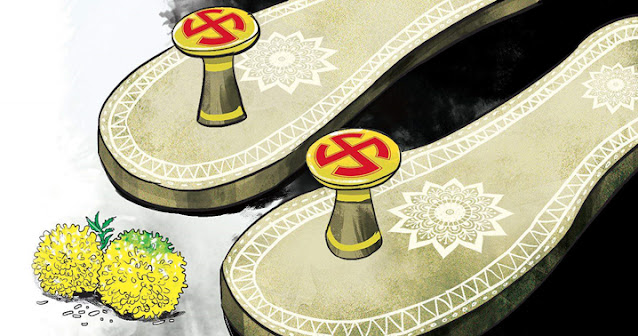Lack of diverse, good-quality seeds curb tree-planting goals and reforestation plans
- Ambitious plans by India, Malaysia, Indonesia and the Philippines to restore tens of millions of hectares of degraded land by 2030 could be derailed by a lack of good-quality and genetically diverse native seeds, according to a new study.
- Researchers, who surveyed tree restoration practitioners in the four countries, found a third of practitioners regularly planting seedlings of unknown origins, which can lead to their growing in unsuitable conditions and low survival rates.
- With countries pledging at the COP26 climate summit to end net forest loss, the worry is that such unsustainable restoration projects will only be another smokescreen for continued deforestation.
- Countries need to invest in their seed supply systems so they can deliver large amounts of quality seeds of diverse species and provenances, which will be key to attaining desired outcomes such as climate mitigation, food security and biodiversity benefits, the researchers said.
Several Asian countries, including India, have set ambitious targets to restore tens of millions of hectares of degraded land by 2030. But, according to new research, these plans could be limited by one fundamental problem: a lack of good-quality and genetically diverse native seeds
Researchers, who published their study in the journal Diversity last month, surveyed tree restoration practitioners from India, Malaysia, Indonesia and the Philippines to understand gaps between national policies and on-the-ground work.
They found bold country-level commitments and hundreds of millions of dollars invested in restoration programs — but also a third of practitioners regularly planting seedlings of unknown origins, which can lead to swaths planted in unsuitable conditions and dying without ever growing into resilient forests.
“This lack of awareness indicates there’s a lot of emphasis on planting the trees, but not monitoring and measuring their survival in the long term,” Ennia Bosshard, first author of the study and a Ph.D. candidate at the University of Exeter, U.K., told Mongabay.
The bulk of the problem lies with fragmented national seed systems that are unable to deliver sufficient quantities of good-quality seeds of diverse species and provenances, according to the study. Provenance, or where a seed is sourced from, influences the conditions it requires to thrive.
That could result in “reforested” areas more akin to low-biodiversity tree plantations than thriving, natural forest ecosystems. The former would not only struggle to adapt to the changing climate over the coming decades, but also fail to deliver promised socioeconomic and environmental benefits. At worst, only a limited number of trees might survive.
“It is such a shame … so much money and effort go into restoration but after several decades, they [might still] not be able to successfully create a forest with the ecosystem functions and services needed,” Bosshard said.
Seed systems in Asia ‘in an embryonic stage’
After rampant deforestation in the last few decades, India, Malaysia, Indonesia and the Philippines have marked out ambitious restoration goals over the next 10 years.
This is despite the fact that the countries are still “in an embryonic stage” of transitioning their seed systems to be fit for purpose, said Christopher Kettle, co-author of the study and an ecologist at the Alliance of Bioversity International and CIAT based in Italy.
Malaysia has pledged to plant 100 million trees by 2025, while India has committed to restoring 26 million hectares (64 million acres) of degraded land by 2030. Altogether, restoration goals for the four countries add up to a combined 47.5 million hectares (117 million acres) by 2030, which would require a total of 157 billion seeds, the study estimated.
Current seed systems won’t be able to meet this demand. In the study, roughly half of practitioners reported “always” or “often” facing challenges such as procuring good-quality seeds, seeds of preferred provenances, and seeds at regular timings.
“There have been piecemeal investments in small-scale nurseries through NGOs … but substantial planning and financial and human resources are needed to scale [seed systems] to be fit for delivery,” Kettle said.
Common obstacles include limited government budgets for restoration and conservation, a lack of collaboration between the forestry and agriculture ministries, and overreliance on civil society and NGOs to address problems, he added.
“You can make restoration commitments but unless you have realistic timelines to build infrastructure for diverse, quality, socially suitable species, everyone is just chasing their tail,” he said.
Adding to the problem, tree species in Asia good for biodiversity and locking up carbon happen to be particularly finnicky at the start of life. Large tropical trees in the region tend to be from the Dipterocarp family, across which hundreds of species are recalcitrant, meaning their seeds cannot survive drying and freezing, making long-term storage in seedbanks ineffective.
These native giants also only fruit once every four to five years in what are known as masting events — synchronized mass flowering and seed production episodes among trees in a forest — so seed collections must be properly timed. All these considerations make them “incredibly challenging to integrate in proper restoration,” Kettle said.
“There needs to be mechanisms in place to monitor native trees and collect seeds during masting. We still don’t see substantial investment going into that part of the forestry sector because there’s limited economic incentive,” he added.
source & credit : https://india.mongabay.com/2021/12/lack-of-diverse-good-quality-seeds-curb-tree-planting-goals-and-reforestation-plans/






Comments
Post a Comment